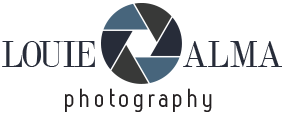Raw vs. Jpeg Photos: Pros, Cons, and Best Settings (VIDEO)
Earlier this week brought you a comprehensive tutorial from an experienced pro who explained why, when, and how to choose between Shutter Priority and Manual exposure mode when photographing subjects in motion. We’re following up on that today with another important consideration; namely, the differences between Jpeg and Raw format when action subjects are the task at hand.
Instructor Richard Ault is an experienced pro based in the UK who specializes in tools and techniques for sports photographers. But much of what you’ll learn in today’s 13-minute episode is equally valuable for other genres of photography when subjects are on the move, like birds in flight and wildlife moving through the frame.
Ault breaks down the differences between Jpeg and Raw, explores the pros and cons of these most-common file formats, and describes how they affect, speed, editing flexibility, better performance, and image quality. As he says,: “I’ll share real-life sports shots, my personal workflow tips, and help you choose the best format for your next game or match.
Contrary to what you may of heard, this isn’t a set-it-and-forget-it decision because the option you choose depends upon the specific task at hand and how you intend to share and print your work. Ault begins with a quick overview, explaining that a Raw image is “a digital photo format that contains the unprocessed, uncompressed data captured directly from a camera sensor.”
Jpeg, on the other hand, “is the widely used format known for an ability to process and compress images—making the files smaller and easier to store.” In other words, they’re ready to use but enable you to make your own basic adjustments as needed.
Ault notes that despite the extra work required, there are many benefits to shooting in Raw. There’s certainly no doubt that this format provides significantly more control during post-processing. Another big plus is the higher dynamic range that you get with a Raw image, and this results in enhanced detail in both highlights and shadows.
Other benefits of Raw include greater color fidelity and the fact that the enhancement you make are non-destructive—meaning you can always change your mind. As you’ll see, there are also a few drawbacks to taking this approach.
Ault then proceeds with a similar discussion regarding the Jpeg format, before turning to the practical implications of whatever choice you make—illustrated with images that make everything super easy to comprehend. Be sure to check out Ault’s instruction YouTube channel once you’re done watching and scroll through the many how-to videos at your disposal.
And don’t miss the aforementioned tutorial describing how another pro determines whether to rely upon Shutter Priority or Manual exposure mode when motion is the name of the game. .





